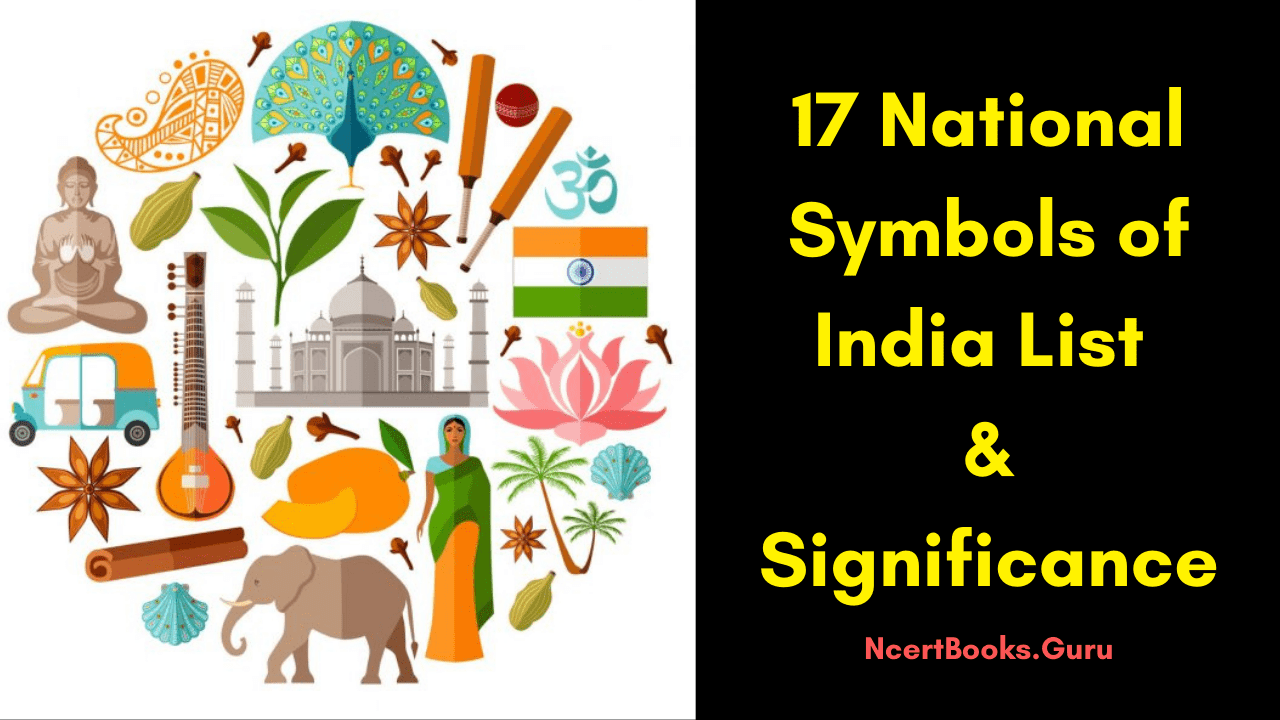National Symbols of India: Have you ever wondered how national symbols play a prominent role in the identification of India? who wrote the national song and anthem of India? Who designed the national flag of India? When Indian national flag was adopted? and many other questions that have occurred in your minds since your childhood. If you are very curious to know more about the National Symbols of India then please go through the links in the below table and find every single detail about Indian national symbols.
Also Check: National Animals of all Countries
National Symbols of India (Complete List)
The Republic of India has 18 national symbols. The national symbols of India portray the culture and nature of India’s National Identity. They inculcate a sense of pride and patriotism in every Indian citizen’s heart. These national symbols were picked up at different times for various events. So, know its importance and respect the national symbols of India. The following table has a list of National Symbols of Incredible India that one can feel very proud of.
| Title | National Symbols |
|---|---|
| Tiranga | |
| Jana Gana Mana | |
| Saka Calendar | |
| Vande Mataram | |
| National Emblem of India | |
| Hockey | |
| Mango | |
| Ganga | |
| Royal Bengal Tiger | |
| Indian Banyan | |
| Ganges River Dolphin | |
| Indian Peacock | |
| Indian Rupee | |
| King Cobra | |
| Indian Elephant | |
| Lotus | |
| Pumpkin | |
| National Pledge |
Importance & History of All National Symbols of the Country
A total of 18 national symbols of India are provided above. Here you will find the importance and history of Indian national symbols in a detailed manner. Firstly, view some of the key points and then continue your learning about the significance of 18 national symbols’.
- They represent the rich cultural fiber that dwells at the core of the country.
- Aid to maintain the picked national symbol for future generations.
- Inculcate a deep feeling of pride in the Indian citizen’s hearts.
- Exemplify a quality special to India and its population.
- Publicize the selected object.
Let’s see the significance & history of the national symbols of the country briefly from the below modules and seek the knowledge about India GK to the fullest & score maximum marks in various competitive exams and Govt. exams.
Tiranga – National Flag of India
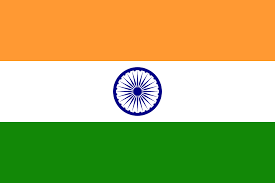
The national flag of India is Trianga shaped in a rectangular symbol. It was made of a special type of silk cloth called Khadi, with three color bands and 24 spoke wheel of navy blue color called Ashoka Chakra. All the colors included in the national flag have their own significant identity. The top saffron color shows the strength and courage of the country. The white middle band points out peace and truth with Dharma Chakra. The green color denotes the fertility, growth, and auspiciousness of the land. The design of the National Flag was adopted by the Constituent Assembly of India on 22 July 1947 and it was designed by Pingali Venkayya.
Do Refer: Countries National Flags with their Population
Jana Gana Mana – National Anthem of India
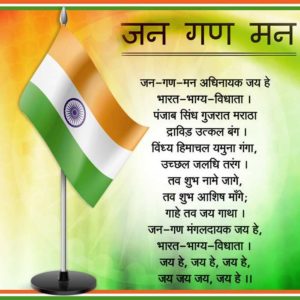
The composition of the Indian National Anthem – Jana Gana Mana was done in Bengali Language and written by the famous poet Late Shri. Rabindra Nath Tagore. Constituent Assembly of India adopted the Hindi version of Jana Gana Mana is the National Anthem of India on 24 January 1950. Firstly, it was sung publicly on December 27th, 1911 at India National Congress Session in Kolkata. The full song made of five stanzas and the first one includes the complete version of the national anthem.
Saka Calendar – National Calendar of India
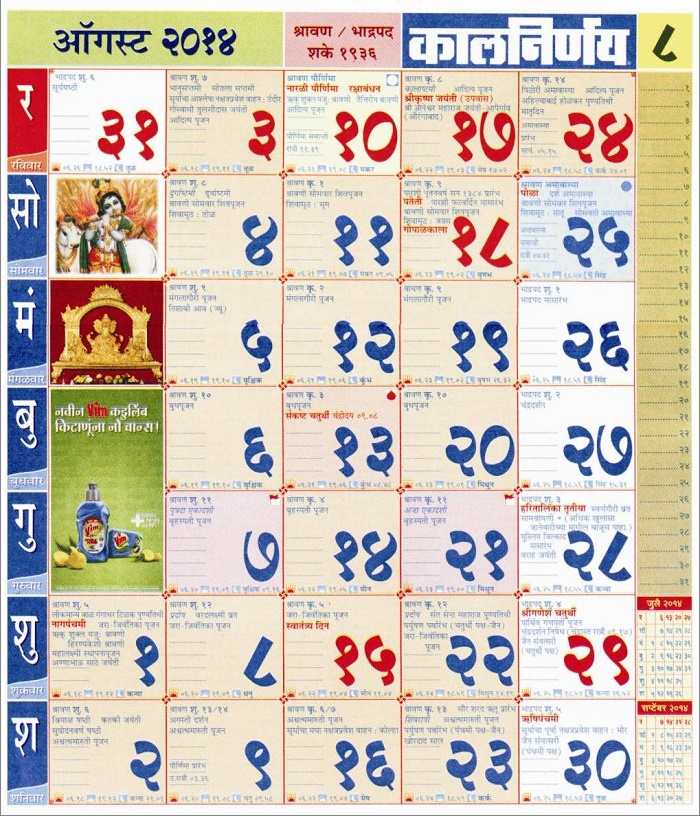
Saka Calendar was launched by the Calendar Committee in 1957. The utilization of the Saka Calendar was formally originated at 1 Chaitra 1879 Saka Era, or 22 March 1957. The National Calendar of India is formed on the basis of the Saka Era that commences with Chaitra(March) as the first month and concludes at Phalguna(February) as the last month. You can observe that the date in Indian National Calendar is as same as the Gregorian Calendar dates.
Vande Mataram – National Song of India
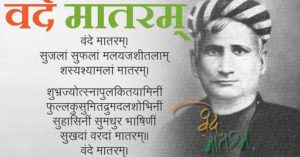
Vande Mataram is the song of India and it was written by a prominent Bengali poet late Shri. Bankimchandra Chatterji in Sanskrit in the year 1870. Later it was composed by the late Shri. Rabindra Nath Tagore. The meaning of three popular words is “I praise thee mother”. This song played an important role in Indian National Movement because it was widely known for its power to influences the masses in political marches against British rule. National Assembly of India declared as the national song of India on 24th Jan 1950.
State Emblem of India – Indian National Emblem
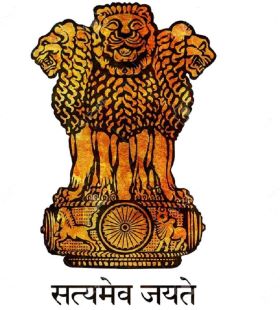
The National Emblem of the Country is taken from the Lion Capital of Ashoka at Sarnath. The slogan of the national emblem is Satyameva Jayate; (“Truth Alone Triumphs). You will observe four Asiatic lions standing back to back, mounted on an abacus with a frieze support sculptures in high relief of an elephant, a galloping horse, a bull, and a lion divided by intervening wheels over a bell-shaped lotus. The National Emblem of India was officially adopted on 26 January 1950. It represents power, courage, pride, and confidence.
Hockey – National Sport of India

The national sport of the country is Hockey and it has its own identity and adventure. The hockey game grew big from 1928-1956 since India played 24 Olympic matches and brought 6 Gold medals in Olympics. Major Dhyan Chand (The Wizard) was one of the greatest hockey players in Indian Sports History.
Mango – National Fruit of India
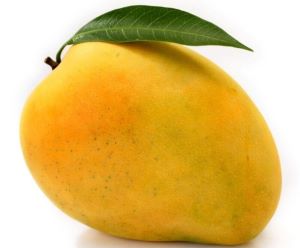
The National Fruit of India is Mango for its delicious taste and sweet aroma. Mango is also known as the King of fruits. The scientific name of mango is Mangifera Indica. It has more than 100 varieties with diverse tastes, smells, and colors. Its sweet fragrance and delicious flavors have triumphed the hearts of many all over the world since ancient times. It represents prosperity, abundance, and richness in favor of the country’s image.
Ganga – Indian National River
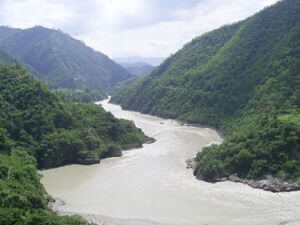
The national river of India is Ganga and also called the Ganges which flows in India and some parts of Bangladesh. It initiates in the snowfields of the Gangotri Glacier in the Himalayas as the Bhagirathi River. As per Hindus, the Ganga river is the most sacred river on the earth. Also, the Ganga river is the longest river in India covering 2525 Km of mountains, plains, and valleys. Shores of the Ganga River like Haridwar, Banaras, and Allahabad are a few famous key points of religious rituals, worship, and belief in Indian Gods.
Royal Bengal Tiger – National Animal of India
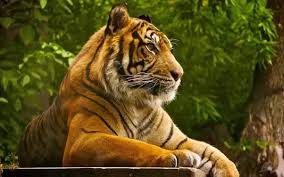
The Indian national animal is Royal Bengal Tiger and it was ranked as the biggest cat in the world. Its botanical name or scientific name is Panthera Tigris. Tiger has gained the important position of the national animal of India due to its utmost physical power, grace, agility, and intelligence. In April 1973, it was adopted as a national animal because of the dwindling population of tigers. The lion was the national animal of India prior to the Tiger.
Indian Banyan – National Tree of India
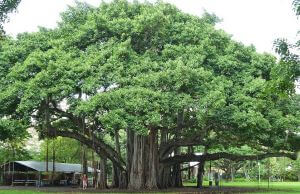
The National tree of India is the Banyan tree and formally known as Ficus benghalensis. Also, it is the common symbol of the mythological ‘Kalpa Vriksha’ or the ‘Tree of Wish Fulfillment because it is connected with durability and has significant medicinal properties. It earned the national tree position due to its numerous benefits of providing medicines and acute shelter to people. It is believed as a holy tree in Hindusim and is adored as an implication of Lord Shiva. The life span and the big size of the banyan tree make it a habitat for a large number of creatures.
Ganges River Dolphin – National Aquatic Animal of India

Indian Government declared the Ganges river dolphin as National Aquatic Animal of India. Also, it is the city animal of the Guwahati. Asiatic Dolphin is one of the wisest mammals on earth. It is the symbol of purity. The Indian National Aquatic Animal Dolphin is the most threatened species of animals and is listed in the National Wildlife Protection Act 1972. Mostly, you will discover the South Asian river dolphin in the Ganges, Yamuna, Chambal river, Brahmaputra river, and their tributaries.
Indian Peacock – National Bird of India
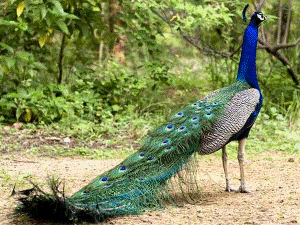
Peacock is the native of the Indian Subcontinent and has gained its name as the National bird of India as a result of its Beauty, divineness, and purity. Also, it is known for its divine and cultural value. The national bird peacock symbolizes the unity of vivid colors and takes the view references in Indian culture. The Government of India declared the Peacock as the national bird of India on February 1, 1963. It is discovered in the drier lowland areas and a resident breeder over the Indian subcontinent.
Indian Rupee – National Currency of India

The national currency of our country is Indian Rupee. The latest form of Indian Rupee (INR) is in Devanagari form though it originated its name from silver coun named Rupiya. Sultan Sher Shah Suri issues the Indian currency for the first time in the 16th century and continued by Mughal Emperor. The publication of the currency is managed by the Reserve Bank of India (RBI). The symbol of the Indian rupee is “र” (ra) and the Latin letter “R” was adopted in 2010. According to Udaya Kumar, the pattern is on the basis of the Indian tricolor.
King Cobra – National Reptile of India

The king cobra scientific name is Ophiophagus Hanna and it is declared as the national reptile of India. The world’s largest venomous snake that measures up to 3m in length is king cobra and capable of grew up to 19 ft and may live up to 25 years. Also, they can inject nearly 6 ml of venom in a single bite. In Hinduism, the king cobra is also called Nagas and it has its own importance. Indian citizens treat kind cobra as divine and worship by offering milk and eggs.
Indian Elephant – National Heritage Animal
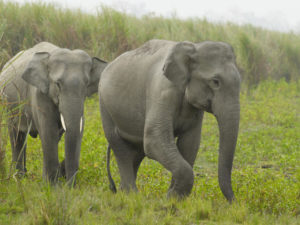
The scientific name of the Indian Elephant is Elephas Maximus Indicus. It has been announced as the National heritage animal of India since 22 Oct 2010, native to mainland Asia. Also, it has been recorded as in danger by habitat loss, fragmentation, and degradation. Moreover, it marks identification for its centrality in our plural cultures, traditions, and oral lore as stated in the report of declaration.
Lotus – Indian National Flower
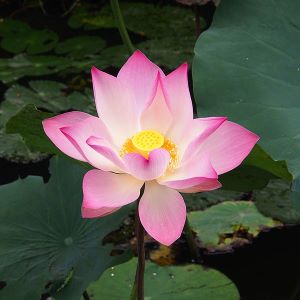
The national flower of India is Lotus and its scientific name is ‘Nelumbo Nucifera. Often, it is named ‘The Padma’ in Sanskrit and treated as a divine flower in Indian culture since ancient times. Also, it is an aquatic herb and grows in shallow muddy water. Always lotus remains pure and beautiful. Also, it exemplifies spirituality, fruitfulness, wealth, knowledge, illumination, along with the purity of heart and mind. Lotus is the flower of the goddess Laxmi. One of the interesting facts about the lotus is it stays above the level of water and not touched by muddy water.
Pumpkin – National Vegetable of India
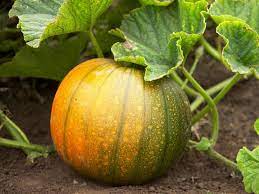
The national vegetable of India is Meetha Kaddu (Indian Pumpkin). It smells sweet and has a taste like a butternut squash. Indian people make use of this vegetable do like others such as chili peppers, cauliflower, drumsticks, potato, etc. In Indian restaurants and in Indian cuisines, pumpkin vegetable is used to prepare a dishes called Sweet Pumpkin Dry Curry, a spicy curry with a tinge of sugar.
National Pledge – Oath of Allegiance

The national pledge of the Republic of India is usually recited by Indian citizens in unity at public events, especially at schools and at the time of Independence Day and republic day celebrations. The pledge is an oath of allegiance of India and it was written in the Telugu language by writer Pydimarri Venkata Subba Rao in 1962. At first, it was recited in a school in Visakhapatnam in the year 1963 and later on translated into different regional languages.
FAQs on List of National Symbols of India
1. How many national symbols are there in India?
There are 18 National Symbols of India.
2. What are the 5 National symbols of India?
The major five national symbols that imply India are National Flag, National Animal, National Bird, National Song, and National Anthem.
3. What is the national symbol of India named?
The National Flag of India is named Tiranga. It was designed by Pingali Venkayya.
4. What is the national insect of India?
Swallowtail butterflies are the national insect of India where they are large, colorful butterflies in the family Papilionidae, and embrace over 550 species
